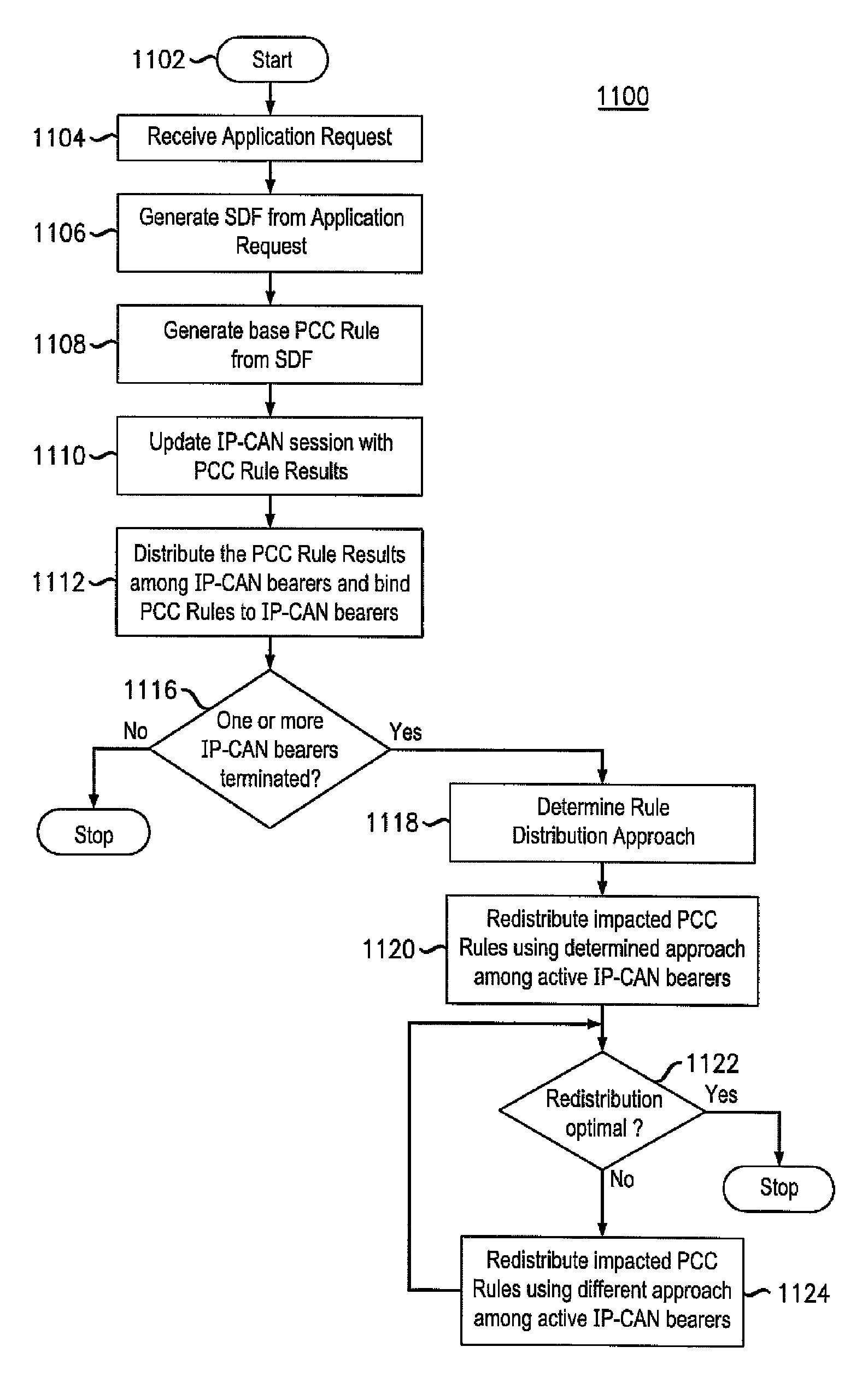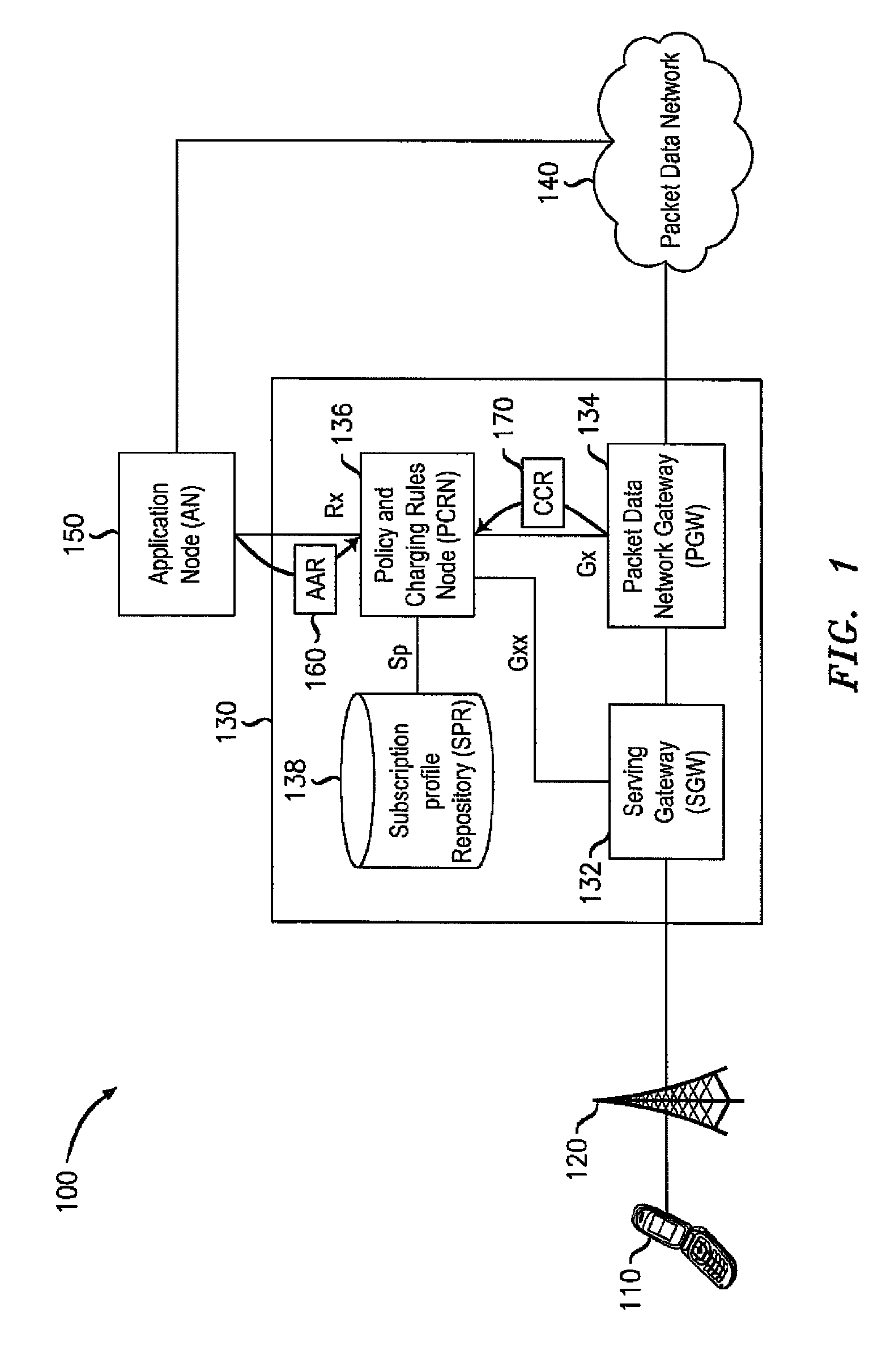Method of distributing PCC rules among IP-connectivity access network (IP-CAN) bearers
a technology of ip-connectivity access network and pcc rules, applied in the field of policy and charging in telecommunications networks, can solve problems such as user experience, epc may not be able to establish application sessions, so as to improve radio reception, improve user experience, and improve resource usage on the pcef
- Summary
- Abstract
- Description
- Claims
- Application Information
AI Technical Summary
Benefits of technology
Problems solved by technology
Method used
Image
Examples
Embodiment Construction
[0025]Referring now to the drawings, in which like numerals refer to like components or steps, there are disclosed broad aspects of various exemplary embodiments.
[0026]FIG. 1 illustrates an exemplary subscriber network 100 for providing various data services. Exemplary subscriber network 100 may be a communications network, such as, for example, an LTE or GPRS mobile communications network, for providing access to various services. The network 100 may include user equipment 110, base station 120, packet core (PC) 130, packet data network 140, and application node (AN) 150.
[0027]User equipment 110 may be a device that communicates with packet data network 140 for providing an end-user with a data service. Such data service may include, for example, voice communication, text messaging, multimedia streaming, and Internet access. More specifically, in various exemplary embodiments, user equipment 110 is a personal or laptop computer, wireless email device, cell phone, television set-top...
PUM
 Login to View More
Login to View More Abstract
Description
Claims
Application Information
 Login to View More
Login to View More - R&D
- Intellectual Property
- Life Sciences
- Materials
- Tech Scout
- Unparalleled Data Quality
- Higher Quality Content
- 60% Fewer Hallucinations
Browse by: Latest US Patents, China's latest patents, Technical Efficacy Thesaurus, Application Domain, Technology Topic, Popular Technical Reports.
© 2025 PatSnap. All rights reserved.Legal|Privacy policy|Modern Slavery Act Transparency Statement|Sitemap|About US| Contact US: help@patsnap.com



